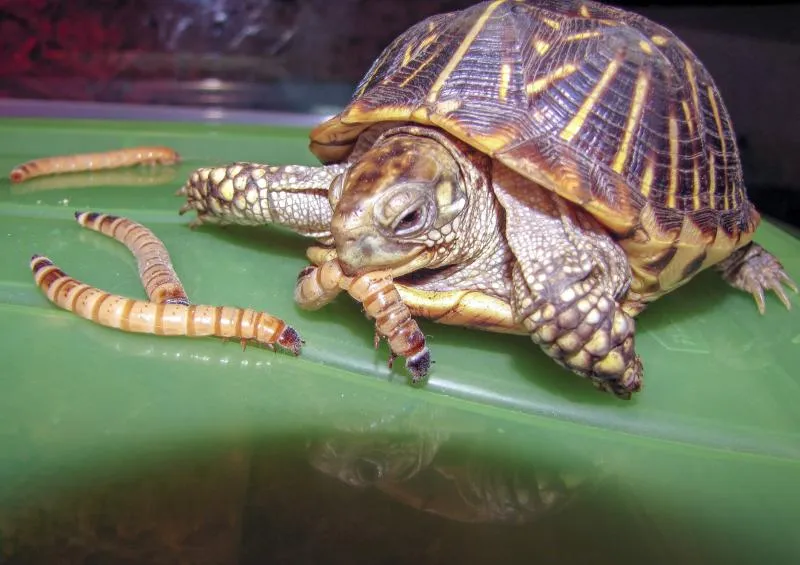
Yes, turtles can eat bloodworms, but they should only be given as an occasional treat, not a daily meal. Bloodworms are rich in protein, which makes them tasty for turtles, yet too much of them can cause health issues if not balanced with other foods.
Many turtle owners believe bloodworms alone are enough, but is that really true? To keep a turtle healthy, it’s important to understand how these worms fit into a complete diet. In this nutrition guide, you will learn the real benefits, possible risks, and the right way to add bloodworms without harming your pet’s health.
What Are Bloodworms and Why Are They Used in Pet Diets?
Bloodworms are the larvae of a type of midge fly. They’re bright red because they contain hemoglobin, the same substance that makes our blood red. They’re widely used in pet diets, especially for fish and some reptiles, because they’re a convenient and appealing food source. They’re often sold in live, frozen, or freeze-dried forms, making them easy to find and store.
They are used in pet diets for a few key reasons:
- High in Protein: They are an excellent source of protein, which is vital for the growth and development of many pets.
- Highly Palatable: Their taste and texture are very appealing to pets, making them a great treat or a way to encourage a picky eater.
- Convenient: They are readily available in different forms and are simple to feed to your pets.
- Natural Food Source: For many aquatic animals, bloodworms are a natural part of their diet, providing a sense of enrichment.
Can Turtles Eat Bloodworms Safely?
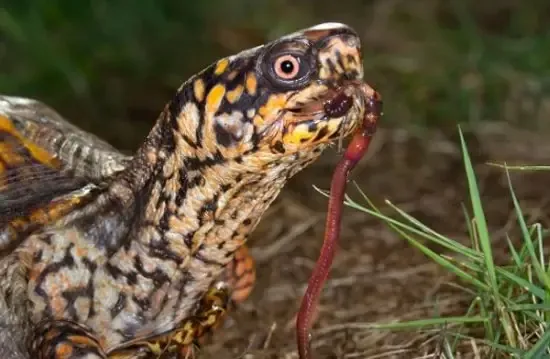
Yes, turtles can eat bloodworms safely, but they should be given in small amounts and not as a daily food. Bloodworms are rich in protein, which helps young turtles grow and stay active. However, if turtles eat too many, they may miss other important nutrients like calcium and vitamins that are needed for a strong shell and good health.
The best way is to use bloodworms as an occasional treat while keeping the main diet balanced with pellets, vegetables, and leafy greens. This way, your turtle enjoys the taste of bloodworms without any risk to long-term health.
Are Bloodworms Healthy for Turtles? (Nutrition Facts)
| Nutrient | What It Does for Turtles | Health Value |
| Protein | Helps growth, energy, and repair of body tissues | High |
| Fat | Provides energy but too much can cause weight gain | Medium |
| Calcium | Needed for strong shell and bones | Low |
| Vitamins | Supports immune system and overall health | Low |
| Moisture | Keeps the body hydrated | High |
Risks of Feeding Too Many Bloodworms to Turtles
Feeding too many bloodworms to turtles can cause health problems. Here are the main risks:
- ❌ Lack of balance – turtles may miss important nutrients like calcium and vitamins.
- ❌ Weak shell – low calcium can make the shell soft or weak.
- ❌ Obesity – extra fat from bloodworms can cause weight gain.
- ❌ Digestive issues – too much protein may upset the stomach.
- ❌ Bad eating habits – turtles may refuse vegetables and only want bloodworms.
- ❌ Short life health risks – poor diet can slowly reduce energy and lifespan.
How Often Should You Feed Bloodworms to Turtles?
1 Young turtles (under 1 year): 1–2 times a week as a treat.
2 Adult turtles: Once a week or once every two weeks is enough.
3 Small portion only: Give a little, just enough for them to finish in a few minutes.
4 Do not replace main food: Pellets, leafy greens, and vegetables must stay the main diet.
5 Watch health signs: If your turtle ignores other foods or gains weight, reduce bloodworms.
Do Baby Turtles and Adult Turtles Eat Bloodworms Differently?
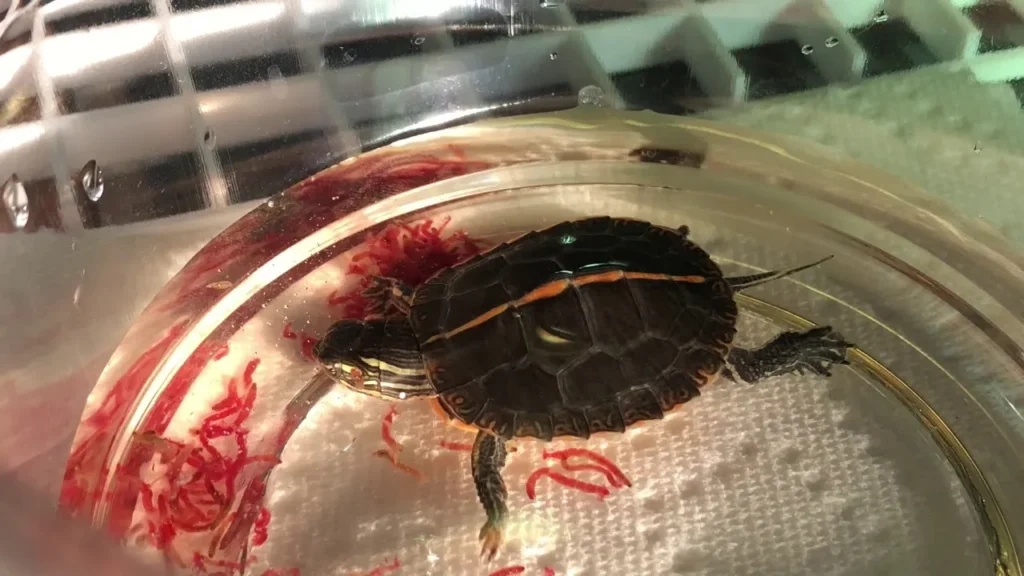
Yes, baby turtles and adult turtles eat bloodworms differently because their diet needs change as they grow. Baby turtles need more protein for fast growth, while adult turtles need more vegetables and calcium for long-term health.
1 Baby turtles: Can eat bloodworms 1–2 times a week to support growth and energy.
2 Adult turtles: Should eat bloodworms only once in a while, with focus on greens and pellets.
This balance makes sure both baby and adult turtles stay healthy and active without missing key nutrients.
Best Way to Feed Bloodworms to Turtles (Live, Frozen, or Dried?)
| Type of Bloodworms | Benefits | Things to Watch |
| Live bloodworms | Fresh, natural, very tasty for turtles | Can carry germs if not clean, harder to store |
| Frozen bloodworms | Safe, easy to keep, keeps most nutrients | Must be thawed before feeding |
| Dried bloodworms | Easy to store, quick snack | Lower nutrients than live or frozen, can be less healthy if overfed |
Frozen bloodworms are the safest and easiest option for most turtle keepers. Live ones can be given sometimes, while dried should only be used as a light snack.
Alternatives to Bloodworms in a Turtle’s Diet
If you don’t want to give bloodworms often, there are many safe and healthy foods that turtles can enjoy. These foods give the right mix of protein, vitamins, and calcium for a strong shell and good health.
- Leafy greens – kale, collard greens, dandelion leaves, and spinach (best for vitamins and calcium).
- Vegetables – carrots, squash, green beans, and bell peppers (for fiber and vitamins).
- Fruits (small amount) – strawberries, apples, melons, or bananas as an occasional treat.
- Other proteins – small feeder fish, earthworms, crickets, or shrimp for variety.
- Commercial turtle pellets – balanced with protein, vitamins, and minerals for daily feeding.
A mixed diet keeps turtles healthy, prevents boredom, and gives them all the nutrients they need for long life.
Can Bloodworms Replace Turtle Pellets or Vegetables?
No, bloodworms cannot replace turtle pellets or vegetables. Bloodworms are high in protein but very low in calcium and vitamins, which turtles need for a strong shell and long life. Turtle pellets give balanced nutrition, and vegetables provide fiber, minerals, and vitamins that bloodworms do not have. The best diet is a mix: pellets as the main food, vegetables for health, and bloodworms only as an occasional treat.
Also read must: Can Red Eared Turtles Eat Strawberries-Turtle Feeding Facts!
Expert Tips to Balance Turtle Diet with Bloodworms
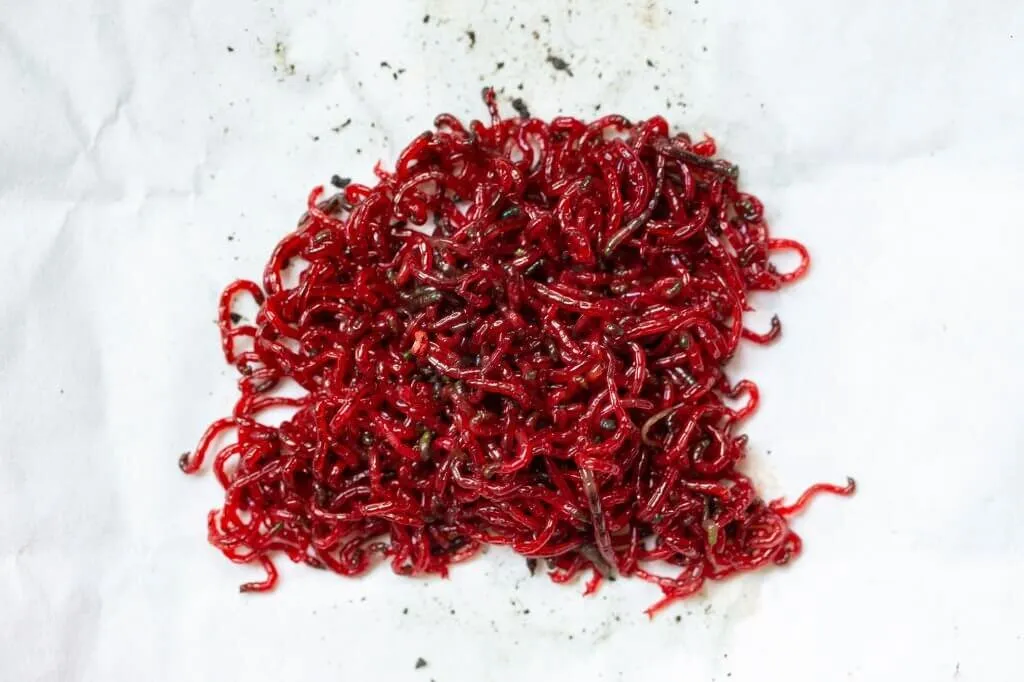
1 Use bloodworms as a treat only – give them once or twice a week, not daily.
2 Keep pellets as the main food – pellets provide balanced protein, calcium, and vitamins.
3 Add leafy greens daily – like kale, lettuce, and dandelion leaves for strong shells.
4 Mix vegetables and fruits – small portions of carrots, squash, or strawberries add variety.
5 Watch portion size – give only as much food as your turtle can finish in a few minutes.
6 Observe health signs – if your turtle avoids greens or gains weight, reduce bloodworms.
7 Rotate protein sources – add shrimp, earthworms, or fish sometimes instead of only bloodworms.
A turtle’s best diet is balanced. Bloodworms make meals exciting, but pellets and vegetables keep them truly healthy.
Common Mistakes Turtle Owners Make with Bloodworms
While bloodworms are a fun and tasty treat for turtles, it’s easy to make mistakes when feeding them. Understanding these common errors can help you keep your turtle healthy and avoid long-term problems.
Feeding Bloodworms as a Daily Meal
Many owners feed bloodworms every day because their turtles love them so much. However, this is a big mistake. Bloodworms are like candy—they’re high in protein but don’t have the vitamins and minerals a turtle needs for a balanced diet. Feeding them too often can lead to malnutrition and health issues, such as a soft shell or poor bone growth. Always remember that they are a treat, not a staple food.
Not Offering Variety in the Diet
Another mistake is relying only on bloodworms for protein. Turtles need a variety of foods to stay healthy. An all-bloodworm diet misses out on crucial nutrients found in other foods. It’s important to mix up their treats with other options like mealworms, earthworms, and krill. This variety ensures your turtle gets a full range of nutrients and keeps them from getting bored with their food.
Ignoring the Importance of Pellets and Greens
Some owners think that because bloodworms are a “natural” food, they’re enough. This leads to them not feeding high-quality turtle pellets and fresh greens. Pellets are specially made to provide all the vitamins and minerals a turtle needs, and greens are a vital source of fiber and hydration. Without these two key parts of their diet, a turtle’s health will suffer, no matter how many bloodworms they eat.
Beyond the Treat: Building a Complete Diet for Your Turtle
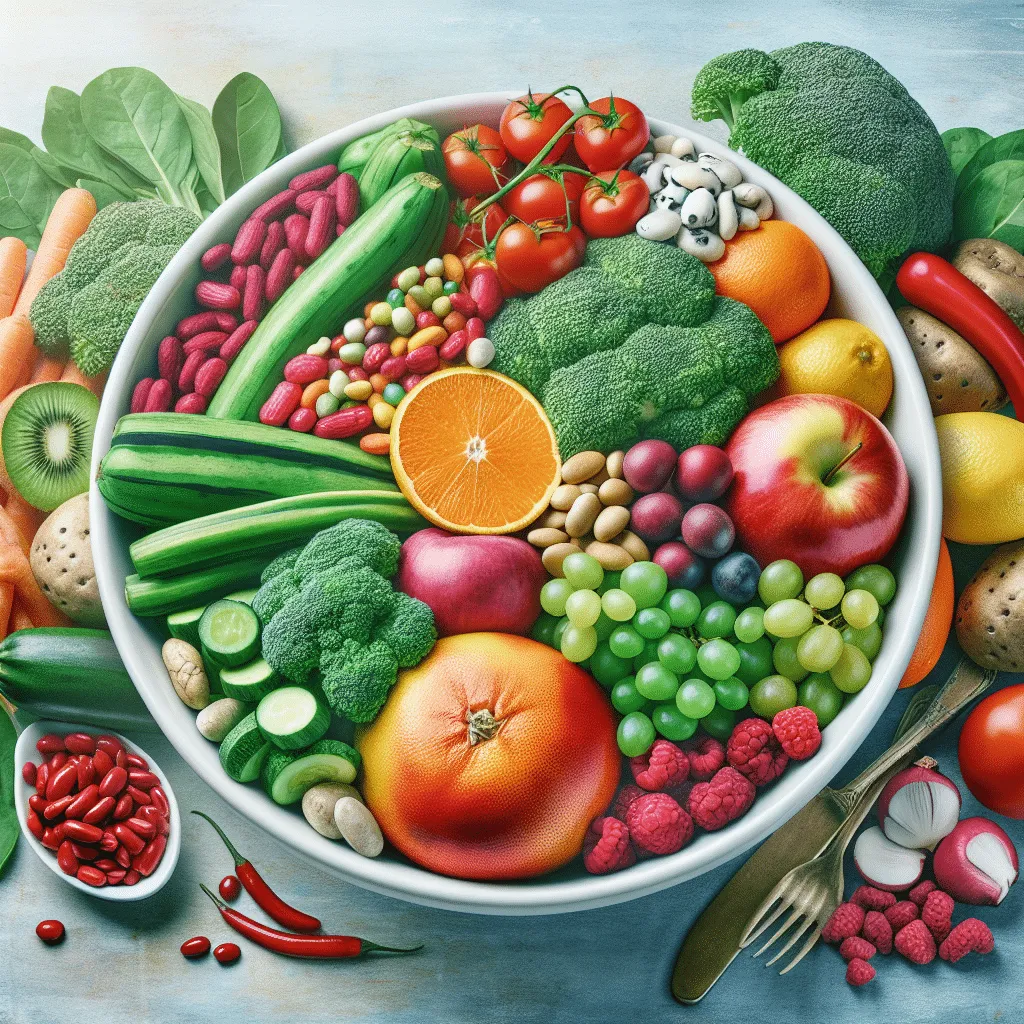
Feeding your turtle is about more than just giving them a tasty snack. A healthy, long life depends on a complete and balanced diet. While treats are fun, the real secret to a happy turtle is a well-rounded meal plan.
The Core of Their Diet: Why High-Quality Pellets Are a Must
Think of high-quality turtle pellets as the foundation of your turtle’s diet. These aren’t just any pellets; they’re specially made to contain all the essential vitamins, minerals, and calcium that a turtle needs. They are the most reliable way to make sure your pet gets the right nutrition every single day, which helps prevent common health problems like a soft shell or eye issues. Don’t skip the pellets—they are the key to a strong and healthy foundation.
Adding Variety: The Role of Fresh Vegetables and Greens
Just like we need vegetables, so do turtles! Fresh leafy greens and vegetables are a very important part of a turtle’s diet. They provide fiber, hydration, and key vitamins that keep your turtle’s digestive system running smoothly. You should offer a variety of safe options, such as kale, collard greens, dandelion greens, and shredded carrots. Fresh veggies are vital for a happy and healthy gut.
The Fun Side: Safe and Healthy Protein Treats (That Aren’t Just Bloodworms)
While bloodworms are a treat, it’s smart to offer other fun and healthy options as well. Giving your turtle a variety of protein sources keeps their diet interesting and gives them different nutrients. Good choices include earthworms, crickets, krill, and small feeder fish. These treats not only add different vitamins and minerals but also provide a natural hunting experience, which is great for a turtle’s mind and body.
Faqs
What greens can tortoises not eat?
Tortoises should not eat greens that are high in oxalates, such as spinach and rhubarb, or vegetables that are gas-producing, like cabbage and broccoli, as these can cause health problems.
What plants are toxic for turtles?
Several common plants are toxic to turtles, including avocado, rhubarb, and many household plants like lilies, azaleas, and oleander, which can cause serious health issues or death.
What animals can eat parsley?
Many animals can eat parsley, including rabbits, guinea pigs, tortoises, and birds, but it should be given in small amounts as a treat because it’s rich in calcium and oxalates, which can be harmful if consumed in large quantities.
Is parsley an herb?
Yes, parsley is an herb. It’s a leafy, green flowering plant that’s widely used in cooking to add flavor and as a garnish.
Is parsley edible?
Yes, parsley is edible for humans and is often used in cooking as a fresh herb, spice, or garnish to add a distinct, fresh flavor to dishes.
conclusion
By understanding the nutritional value of bloodworms and mixing them with other foods, you can avoid the common mistakes that lead to health problems. A healthy turtle is a happy turtle, and the best way to ensure this is by offering a diverse menu. With a little effort, you can give your shelled friend everything they need to live a long, vibrant life.In the end, the simple answer is yes, turtles can eat bloodworms, but the bigger truth is that they should be a small part of a much larger, more complete diet. Think of them as a fun, protein-rich snack—not a main meal. A turtle’s health truly depends on a solid foundation of high-quality pellets, fresh leafy greens, and a variety of other healthy treats.